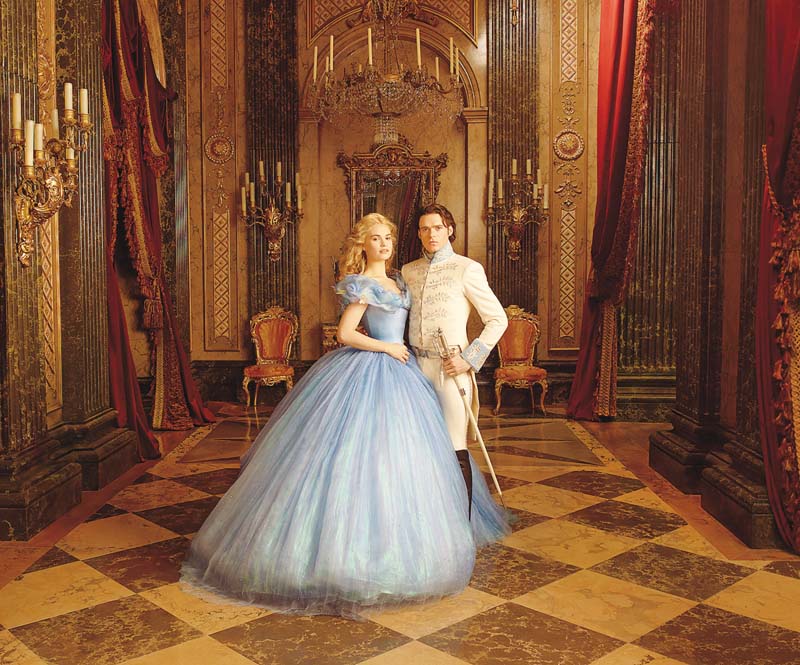
The film opens with a 10-year-old Ella (Eloise Webb) living happily with her doting parents. Then tragedy strikes and Ella loses her mother (Hayley Atwell) and father (Ben Chaplin). She is left at the mercy of a cruel stepmother (Cate Blanchett) and stepsisters Drisella (Sophie McShera) and Anastasia (Holliday Grainger), who treat her like a servant and rename her Cinderella (the adult Ella is played by Lily James).
Ella then meets a handsome stranger (Richard Madden) whom she believes to be an apprentice at the palace, but who is really a prince. She is delighted at the prospect of meeting him again when she receives an invitation to a royal ball and heartbroken when her stepmother does not allow her to attend the party. Her Fairy Godmother (Helena Bonham-Carter) intervenes by engineering a spectacularly grand entrance for her at the ball. The prince is delighted to see Ella again and, through a series of twists and turns, the two are soon united to live happily ever after.
The one departure from the original story is the meeting between Cinderella and the prince before the royal ball. Cinderella wins the prince over by asking him to spare the life of the stag he is hunting. She falls in love when he shows kindness by letting the stag go. The two are captivated not just by each other’s admittedly good looks but by a shared spirit as well. The blend of enchantment, enlightenment and romance makes this one of the film’s most effective scenes.
Lily James and Cate Blanchett tweak the story by giving greater depth — and a little bit of spunk — to their characters. James plays the central character using what can only be described as an inherent inner glow to great advantage. Hers is not a spineless and abused Cinderella but one who uses courage and kindness as strengths to deal with, rather than fight against, cruelty and abuse. In the hands of a lesser actor, the character would come across as appallingly ‘good’ but here it is endearing and believable.
The regal, imperious and cruel Blanchett waltzes through the movie with a menacing loveliness and frightening grace. She portrays the wicked Lady Tremaine as a damaged woman who uses a studied composure to mask desperation and a humble upbringing. She is as determined to marry her daughters into advantage as she is disdainful of their lack of distinguishing qualities. There is pathos beneath the gothic veneer of malevolence.
Cinderella features a number of competent performances but the real star of the movie is its lush visual appeal as production design, costumes and cinematography work to present a sumptuous feast for the eyes and the senses. The film was shot with actual negative film, using little more than reflectors, tungsten and natural light. The results are crisp images with warm hues, accurate skin tones, spectacular interactions of light and shade and a magical profusion of colour.
Branagh’s may well be the finest film version of the enduring fairy tale but it leaves one question unanswered: Why are the glass slippers not affected when everything else returns to its original form at the stroke of midnight as the Fairy Godmother’s spell wears off?

Published in The Express Tribune, Sunday Magazine, March 29th, 2015.



1723032398-0/BeFunky-collage-(36)1723032398-0-165x106.webp)













COMMENTS (18)
Comments are moderated and generally will be posted if they are on-topic and not abusive.
For more information, please see our Comments FAQ